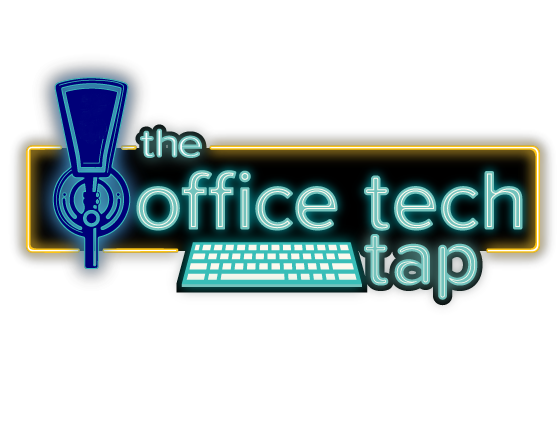💻 Ricoh 🤝 Toshiba

May 25, 2023
Industry
AI’s Transformational Impact on the Print and Imaging Industry
Four Ways AI Can Impact the Office

Quocirca has released a report highlighting four ways AI can transform the print and imaging industry. Democratization of AI, spearheaded by AI models like ChatGPT, is leading this charge and making advanced technology accessible to all.
In the print industry, AI can fuel service innovation through predictive maintenance. The marriage of big data and AI equips print manufacturers with the tools to perform maintenance more efficiently. Modern printers are connected IoT devices, and their embedded sensors are churning out a wealth of data. With AI, this data can be analyzed to predict device malfunctions, optimally schedule maintenance, and reduce downtime – a winning proposition for both manufacturers and customers.
AI’s power is also evident in advanced analytics. Traditional dashboards focused on presenting historical data are giving way to AI-powered platforms that use predictive and prescriptive analytics. These tools can not only present print usage and cost data but also provide insights into opportunities for digitization and their potential impact.
Endpoint security is another crucial area where AI shows promise. Advanced security mechanisms powered by AI can self-monitor and self-heal devices, provide network-level behavior analytics, and offer real-time anomaly detection. Coupled with AI-enhanced authentication and access control systems, they can better mitigate security threats.
Perhaps one of the most compelling applications of AI in the print industry is Intelligent Document Processing (IDP). By integrating AI, ML, OCR, and NLP into document capture platforms, businesses can bridge the gap between the paper and digital worlds, leading to increased accuracy, improved productivity, and better compliance.
– Greg Walters, Head Writer
Helping Dealers in the Next Era of Imaging
From raw data to business intelligence to the implementation of best business practices specific to each individual company, NEXERA offers not just advisors, but implementers of projects and policies, while delivering the employee training necessary for a business to grow.
Industry
Ricoh and Toshiba Tec Merge to Drive Digital Transformation
Underscores Commitment to Print but Highlights Industry Consolidation

Ricoh Company, Ltd. (Ricoh) and Toshiba Tec Corporation (Toshiba) officially announced plans to form a joint venture. The new entity will be 85% owned by Ricoh and 15% by Toshiba.
Ricoh and Toshiba, two major players in office technology, have shaken the industry with their recent announcement of merging their production divisions. Aiming to capitalize on the digital era (while mitigating ongoing industry struggles), this integration is set to kickstart a revolution in the design and production of multifunction office devices and is expected to be operational by the second quarter of 2024.
This merger isn’t just about combining forces; it’s about adapting to the new business environment. With a clear drop in print volume, the companies have seized this opportunity to focus on the digital needs of their customers, aiming to develop solutions that support digital transformation.
The upcoming venture will be based in Japan, and the new entity plans to integrate a blend of unique technologies.
Toshiba confirmed that it has no plans to acquire Ricoh, or vice versa, and the impact on the industry may not actually be felt until 2026 when products from the joint venture will be produced. For dealers, no changes will be made to TABS’s distribution model and the same is to be expected for Ricoh.
As per Ricoh’s press release, the goal is to stay competitive in a landscape that’s moving beyond standalone hardware to a combination of software and service solutions. Navigating this shift is a common challenge, and this merger signals a forward-thinking strategy to meet it head-on.
Even with the foreseen benefits, the road ahead isn’t without potential bumps. Procedures under competition laws, foreign investment regulations, and other issues need to be completed in Japan and abroad. Yet, the promise of this venture – advancing digital transformation strategies for themselves and their customers – overshadows the hurdles.
– Greg Walters, Head Writer
Work
Notable Trends in Print Management and Managed Print Services
Changing Clouds, Emerging AI, and Stubborn Office Workers

In an industry that never stands still, the print management and Managed Print Services (MPS) sectors are undergoing a significant transformation. From the embrace of cloud-based solutions to the integration of AI, these changes are driving a whole new phase of efficiency and productivity.
One of the most noteworthy shifts has been the transition from on-premise print management systems to cloud-based platforms. This move has not only allowed for improved cost accounting and usage tracking but has also enhanced security. As Keypoint Intelligence’s Jamie Bsales notes, “Pages that aren’t retrieved at the device are never printed, so you have the paper and supplies savings.”
Adding new layers of convenience is the advent of mobile printing, which not only streamlines workflows but also supports remote firmware deployment. And let’s not overlook the infusion of scanned workflows, with Bsales emphasizing that “the sky’s the limit with what features can be added because you can layer in all sorts of processing in between.”
In terms of MPS, however, the forecast is not so bright. West McDonald, president of the Managed Print Services Association, suggests that growth in this area is dwindling due to cheaper print costs and a decline in the overall need for managed printing. His solution? New customers. He believes that “the only way to grow with managed print is to add net new customers.”
But as we turn a wary eye to the decline of MPS, the promise of Artificial Intelligence (AI) stands ready. Greg Walters sees AI’s potential in enhancing workflows and securing cloud-based documents, admitting, “This is going to be a stretch for print management companies to connect the dots, but there are algorithms involved in the print management solution that can be taken over by AI.”
In a rapidly changing industry, the print management and MPS sectors show both growing pains and potential. But one thing is certain – with the advent of cloud-based solutions and AI, it’s an exciting time to be a part of this dynamic landscape.
The entire article, is here.
– Greg Walters, Head Writer
Internet Relay Chat – News to Go
- Google Will Soon Show You AI-Generated Ads. Wired
- The New Everyday Reality of Service Robots. WSJ
- AI Optimism: How Embracing Artificial Intelligence is Getting Workers Ahead. BBC
- This Week in the Copier Industry Twenty Years Ago. P4P Hotel




